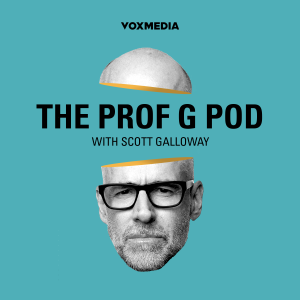

This briefing document summarizes the main themes and important ideas presented in the provided excerpts from Daniel Kahneman's "Thinking, Fast and Slow." The book explores the two systems that drive human thought and decision-making: System 1, which is fast, intuitive, and emotional; and System 2, which is slower, more deliberate, and logical. Kahneman examines how these systems interact and how their characteristics lead to various cognitive biases and heuristics that significantly influence our judgments and choices, often without our conscious awareness. The ultimate aim of the book, as stated by Kahneman, is to "improve the ability to identify and understand errors of judgment and choice, in others and eventually in ourselves, by providing a richer and more precise language to discuss them."
Main Themes and Important Ideas 1. The Two Systems of ThinkingKahneman introduces the central framework of the book: the dual-system model of the mind.
- System 1: Operates automatically and quickly, with little or no effort and no sense of voluntary control. It is responsible for impressions, intuitions, feelings, and automatic skills. Examples include "Detect that one object is more distant than another," "Complete the phrase ‘bread and …’," and "Drive a car on an empty road."
- System 2: Allocates attention to the effortful mental activities that demand it, including complex computation. The operations of System 2 are often associated with the subjective experience of agency, choice, and concentration. Examples include "Focus attention on the clowns in the circus," "Count the occurrences of the letter a in a page of text," and "Compare two washing machines for overall value."
Kahneman emphasizes that the distinction between the systems is a "useful fiction," serving as a way to describe mental processes rather than literal agents within the brain. He explains, "The brief active sentence that attributes calculation to System 2 is intended as a description, not an explanation. It is meaningful only because of what you already know about System 2."
2. Attention, Effort, and the Lazy ControllerSystem 2 requires mental effort, and its capacity is limited. Tasks that demand more effort lead to physiological responses like pupil dilation. Kahneman uses the "Add-1" task as an example of an exercise that pushes the limits of System 2's cognitive abilities. He notes, "Much like the electricity meter outside your house or apartment, the pupils offer an index of the current rate at which mental energy is used."
System 2 is characterized as a "lazy controller" because it tends to conserve energy and often endorses the readily available intuitions of System 1 without sufficient scrutiny. This can lead to errors in judgment when System 1's initial response is flawed. The bat-and-ball puzzle ($1 + ball costs 10¢, total $1.10 - what is the cost of the bat?) illustrates this, where the intuitive answer (10¢) is often accepted without System 2 actively checking it. Kahneman and Frederick argue that giving the intuitive answer indicates that "that person did not actively check whether the answer was correct, and her System 2 endorsed an intuitive answer that it could have rejected with a small investment of effort."
3. The Associative Machine and PrimingSystem 1 operates through a vast network of associated ideas. Activation of one idea can prime related ideas, influencing subsequent thoughts and actions. This "priming effect" can occur without conscious awareness. For example, "If the idea of EAT is currently on your mind... you will be quicker than usual to recognize the word SOUP." These associations can also be reciprocal, as seen in the pencil experiment where induced facial expressions (smile or frown) influenced the perceived humor of cartoons.
4. Cognitive Ease and IllusionsCognitive ease refers to the subjective experience of fluency and familiarity. When things are easy to process, we are more likely to perceive them as true, good, and familiar. Conversely, difficulty can signal a problem and trigger more analytical thinking (System 2). Illusions, such as the Moses illusion ("How many animals of each kind did Moses take on the ark?"), demonstrate how easily we can overlook inconsistencies when a question fits a familiar pattern. "When something cement does not fit into the current context of activated ideas, the system detects an abnormality."
5. Jumping to Conclusions (WYSIATI)System 1 is prone to "jumping to conclusions" based on limited information – "What You See Is All There Is" (WYSIATI). It constructs a coherent story from the available data, even if crucial information is missing. This can lead to biases like the bias to believe and confirm, where the initial attempt to understand a statement involves believing it. Daniel Gilbert proposed that "understanding a statement must begin with an attempt to believe it."
6. How Judgments Happen: Heuristics and Basic AssessmentsWhen faced with a difficult question, System 1 often substitutes it with an easier, related question. This is the basis of many heuristics. System 1 continuously performs "basic assessments" of the environment, such as evaluating attractiveness or detecting dominance in faces. These assessments can influence more complex judgments. The "mental shotgun" refers to the fact that an intention to answer a specific question by System 2 can automatically trigger other related computations by System 1.
The affect heuristic, proposed by Paul Slovic, describes how our likes and dislikes can determine our beliefs about the world. "Your political preference determines the arguments that you find compelling."
7. Anchoring and AdjustmentAnchoring occurs when exposure to a number (the anchor) influences a subsequent judgment, even if the anchor is irrelevant. People tend to "adjust" away from the anchor, but often insufficiently. Kahneman illustrates this with questions where an initial number comes to mind, and we adjust from it.
8. Availability HeuristicThe availability heuristic is the tendency to judge the frequency or probability of an event by the ease with which relevant examples come to mind. This can be influenced by factors other than actual frequency, such as the emotional intensity or recency of events. Schwarz and his colleagues found that judgments can be influenced by "the number of instances retrieved [and] the ease with which they come to mind."
9. Representativeness Heuristic and Base-Rate NeglectThe representativeness heuristic involves judging the probability of an event based on how well it matches a prototype or stereotype, often leading to the neglect of base-rate information (the overall frequency of the event). The example of Tom W's specialty illustrates this tendency. Kahneman notes that "base rates are always weighted less, and sometimes neglected altogether, when specific information about the case at hand is available."
10. Regression to the MeanRegression to the mean is a statistical phenomenon where extreme values tend to be followed by values closer to the average. Kahneman discusses how this can be misinterpreted as a causal effect or the result of interventions.
11. The Illusion of Validity and SkillKahneman critiques the illusion of validity, where we have unwarranted confidence in predictions based on a consistent pattern of inputs, even if the accuracy of those predictions is low. He also touches on the illusion of skill in domains like the stock market, where high trading volume suggests that buyers and sellers have different opinions despite often having the same information. "Most of the buyers and sellers know that they have the same information; they exchange the stocks primarily because they have different opinions. The puzzle is why buyers and sellers alike think that the current price is wrong."
12. Intuition as Recognition and ExpertiseExpert intuition, according to Herbert Simon, is "nothing more and nothing less than recognition." In domains with regularities and opportunities for learning through feedback, experts develop the ability to quickly recognize patterns and make accurate judgments. Gary Klein's recognition-primed decision (RPD) model describes how experts often make decisions by quickly generating a plausible option (System 1) and then mentally simulating it (System 2).
13. Prospect Theory: Loss Aversion and FramingKahneman introduces prospect theory, developed with Amos Tversky, as an alternative to expected utility theory. Key concepts include:
- Reference Dependence: Outcomes are evaluated relative to a reference point (e.g., the current state).
- Diminishing Sensitivity: The subjective value of gains or losses diminishes as their magnitude increases.
- Loss Aversion: Losses loom larger than equivalent gains. "The concept of loss aversion is certainly the most significant contribution of psychology to behavioral economics." Kahneman notes that this idea, while seemingly obvious ("our grandmothers knew a great deal"), has profound and diverse consequences.
The way a decision problem is framed (e.g., as a gain or a loss) can significantly affect choices, even if the underlying options are the same. This is known as framing effects.
14. Mental AccountingMental accounting refers to the way individuals categorize and evaluate financial outcomes, often in isolated "accounts" that do not adhere to rational economic principles of fungibility. Richard Thaler's work highlights how these mental accounts can lead to seemingly irrational behaviors, such as being more willing to drive to save $5 on a cheap item than on an expensive one.
15. Regret and Counterfactual ThinkingThe anticipation and experience of regret play a significant role in decision-making. Regret is intensified when we can easily imagine having made a different choice or when an outcome deviates from a norm. "Intense regret is what you experience when you can most easily imagine yourself doing something other than what you did." Kahneman discusses how regret is linked to normality and how the fear of regret can influence choices.
16. The Two Selves: Experiencing Self vs. Remembering SelfKahneman distinguishes between two aspects of the self:
- The Experiencing Self: Lives in the present and registers moment-to-moment experiences of pleasure and pain. Its well-being can be assessed by the "hedonimeter total" – the sum of the values of its moments.
- The Remembering Self: Retains and evaluates past experiences. Its evaluations are heavily influenced by the peak and the end of an episode (the peak-end rule) and are often insensitive to the duration of the experience (duration neglect). "The remembering self… tells stories and makes choices, and neither the stories nor the choices properly represent time."
This distinction helps explain why our memories of experiences may not accurately reflect how we felt throughout them and how our decisions can be based on these biased memories.
17. Well-being and the Focusing IllusionKahneman explores the concept of well-being, differentiating between experienced well-being and life satisfaction (as reported by the remembering self). He introduces the "focusing illusion," which occurs when we focus on one aspect of life and exaggerate its importance when evaluating our overall happiness. "Nothing in life is ever as important as you think it is while you are thinking about it."
ConclusionThe excerpts from "Thinking, Fast and Slow" provide a compelling introduction to Kahneman's seminal work on the dual-system model of the mind and the various cognitive biases and heuristics that shape our judgments and decisions. By understanding these systematic errors in thinking, we can develop a richer vocabulary for discussing them and potentially improve our ability to make better choices in our personal and professional lives. The book underscores the idea that while System 1's intuitive and fast thinking is often useful, its susceptibility to biases necessitates a more active and critical engagement of System 2.
RYT Podcast is a passion product of Tyler Smith, an EOS Implementer (more at IssueSolving.com). All Podcasts are derivative works created by AI from publicly available sources. Copyright 2025 All Rights Reserved.More Episodes
All Episodes>>Create Your Podcast In Minutes
- Full-featured podcast site
- Unlimited storage and bandwidth
- Comprehensive podcast stats
- Distribute to Apple Podcasts, Spotify, and more
- Make money with your podcast











